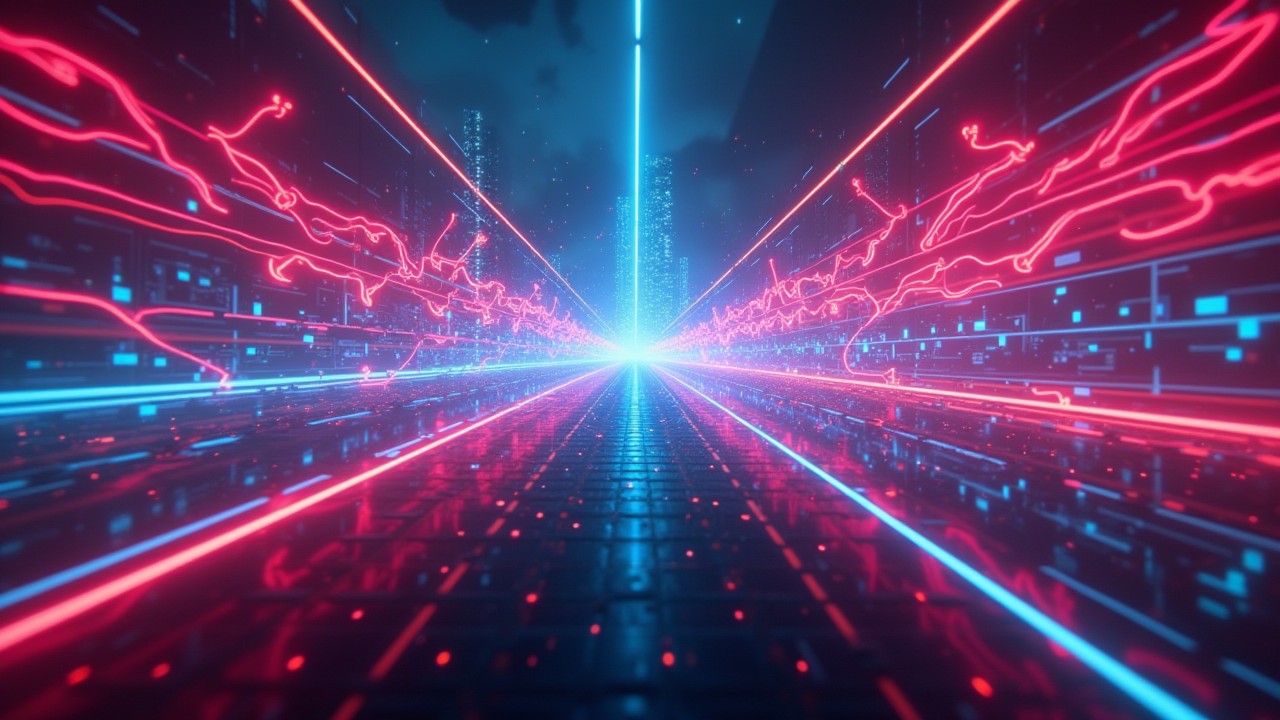Slideshow videos are a fantastic way to quickly turn boring images into an exciting piece of content. You compile images, add some music, some effects and you get an awesome video in minutes. It is popularly used for various use cases like marketing videos, invitation cards, celebration videos, and more.
Creating a slideshow video is simple and straightforward with desktop and mobile based video editors. However, it gets repetitive and manual if you need to create more than one video. That’s where using Python to programmatically turn images into videos can be powerful and save you hours of work. After all, we Python users love to automate everything, don’t we?
In this article, you will learn to turn images into a slideshow video with background music using Python.
Creating a simple slideshow video using Python
At the end of this tutorial, you will generate the following slideshow video using Python:
Let’s get started!
The Shotstack API and Python SDK
Shotstack is a cloud based video editing API that makes it possible to render multiple videos at once. Rendering videos is CPU intensive and it can take hours to edit and generate videos at scale. With Shotstack you can automate the process and programmatically generate videos. You can sign up for a free developer account and get the API key you will need for this tutorial.
You will also need the Shotstack Python video editing SDK which uses Python
Install the SDK and set up credentials
Install the the Shotstack Python SDK using the command line:
pip install shotstack_sdk
You may need to use pip3 depending on how you configured your Python environment.
Then, set your API key as an environment variable (Linux/Mac):
export SHOTSTACK_KEY=your_key_here
or, if using Windows:
set SHOTSTACK_KEY=your_key_here
Replace your_key_here with your provided sandbox API key which is free for testing and development.
Importing required modules
This tutorial will create a script to be run from the command line, so lets create an empty file. You can call it what you like, but for this tutorial lets go with slideshow.py.
Open the file and ad some code to import the required modules for the project. We will be using Shotstack Python SDK to edit and render our video. You can check the README for full documentation if you first want to learn about the SDK.
import shotstack_sdk as shotstack
import os
from shotstack_sdk.model.soundtrack import Soundtrack
from shotstack_sdk.model.image_asset import ImageAsset
from shotstack_sdk.api import edit_api
from shotstack_sdk.model.clip import Clip
from shotstack_sdk.model.track import Track
from shotstack_sdk.model.timeline import Timeline
from shotstack_sdk.model.output import Output
from shotstack_sdk.model.edit import Edit
Configuring the API client
Next, set up the client with the API URL and key. It should use the key you added to the environment variables in the previous step:
host = "https://api.shotstack.io/stage"
configuration = shotstack.Configuration(host = host)
configuration.api_key['DeveloperKey'] = os.getenv('SHOTSTACK_KEY')
with shotstack.ApiClient(configuration) as api_client:
api_instance = edit_api.EditApi(api_client)
Adding images for the slideshow
We now want to define an array of static images to use in our slideshow. The images need to be hosted online and be accessible via a public or signed URL. We will be using the following real estate images from the Pexels stock image library, hosted in our own S3 bucket. You can replace it with your own image urls, as many as you like.
images = [
"https://shotstack-assets.s3.ap-southeast-2.amazonaws.com/images/realestate1.jpg",
"https://shotstack-assets.s3.ap-southeast-2.amazonaws.com/images/realestate2.jpg",
"https://shotstack-assets.s3.ap-southeast-2.amazonaws.com/images/realestate3.jpg",
"https://shotstack-assets.s3.ap-southeast-2.amazonaws.com/images/realestate4.jpg",
"https://shotstack-assets.s3.ap-southeast-2.amazonaws.com/images/realestate5.jpg"
]
Combining images to create a video
We no want to loop through the array of photos and stitch them together to create our video. We will iterate over the images array and create clips, defining the start time, length, and motion effect.
We use the ImageAsset model to set the image URL and the Clip model to create the clip playback properties and add them to our clips array:
clips = []
start = 0.0
length = 3.0
for image in images:
imageAsset = ImageAsset(src = image)
clip = Clip(
asset = imageAsset,
start = start,
length = length,
effect = "zoomIn"
)
start = start + length
clips.append(clip)
Slides begin playing immediately after the previous one finishes. For the first image we default the start to 0 so it starts playing right away. Each image will appear in the video for a duration of 3 seconds.
The zoomIn effect gives a motion effect to all the images. Motion effects you can use to enhance your video slideshow include:
zoomIn- slow zoom inzoomOut- slow zoom outslideLeft- slow slide (pan) leftslideRight- slow slide (pan) rightslideUp- slow slide (pan) upslideDown- slow slide (pan) down
You can also use slow and fast variants to create faster or slower motion, like: zoomInSlow or slideUpFast.
Adding the clips to a tracks
The Shotstack API takes its inspiration from desktop editing software such as; a timeline, tracks, and clips. Let’s create a [track[(https://shotstack.io/docs/api/#tocs_track) and add our array of clips. A track is a container for clips which works like a layer, you can layer multiple tracks on top of one another.
track = Track(clips = clips)
Adding a soundtrack
To bring our video to life we’ll want to add a soundtrack. We use the SDK’s Soundtrack model to set an audio file URL and a fadeInFadeOut volume effect. Similar to images, you can add the URL of an mp3 file. We will use one from Pixabay’s stock library.
soundtrack = Soundtrack(
src = "https://cdn.pixabay.com/audio/2022/03/23/audio_07b2a04be3.mp3",
effect = "fadeInFadeOut"
)
Add everything to the timeline
The next step in setting up our edit is to add everything to the timeline timeline. The timeline is a container for multiple track arrays, the soundtrack, plus a setting for the videos background color:
timeline = Timeline(
background = "#000000",
soundtrack = soundtrack,
tracks = [track]
)
Configuring the output and final edit
Last, we need to configure the output format and add the timeline and output to create an edit. We use the Output and Edit models:
output = Output(
format = "mp4",
resolution = "sd"
)
edit = Edit(
timeline = timeline,
output = output
)
Sending the edit to the Shotstack API
Finally, we send the data to the video editing API for processing and rendering. The Shotstack SDK converts everything we configured using the SDK models to JSON, adds our key to the request header, and sends everything to the render endpoint.
try:
api_response = api_instance.post_render(edit)
message = api_response['response']['message']
id = api_response['response']['id']
print(f"{message}\n")
print(f">> render id: {id}")
except Exception as e:
print(f"Unable to resolve API call: {e}")
Final script
In case you skipped the walkthrough, here is the final code in its entirety with a few defensive checks and optimizations:
import shotstack_sdk as shotstack
import os
from shotstack_sdk.model.soundtrack import Soundtrack
from shotstack_sdk.model.image_asset import ImageAsset
from shotstack_sdk.api import edit_api
from shotstack_sdk.model.clip import Clip
from shotstack_sdk.model.track import Track
from shotstack_sdk.model.timeline import Timeline
from shotstack_sdk.model.output import Output
from shotstack_sdk.model.edit import Edit
if __name__ == "__main__":
host = "https://api.shotstack.io/stage"
if os.getenv("SHOTSTACK_HOST") is not None:
host = os.getenv("SHOTSTACK_HOST")
configuration = shotstack.Configuration(host = host)
if os.getenv('SHOTSTACK_KEY') is None:
sys.exit("API Key is required. Set using: export SHOTSTACK_KEY=your_key_here")
configuration.api_key['DeveloperKey'] = os.getenv('SHOTSTACK_KEY')
with shotstack.ApiClient(configuration) as api_client:
api_instance = edit_api.EditApi(api_client)
images = [
"https://shotstack-assets.s3.ap-southeast-2.amazonaws.com/images/realestate1.jpg",
"https://shotstack-assets.s3.ap-southeast-2.amazonaws.com/images/realestate2.jpg",
"https://shotstack-assets.s3.ap-southeast-2.amazonaws.com/images/realestate3.jpg",
"https://shotstack-assets.s3.ap-southeast-2.amazonaws.com/images/realestate4.jpg",
"https://shotstack-assets.s3.ap-southeast-2.amazonaws.com/images/realestate5.jpg"
]
clips = []
start = 0.0
length = 3.0
for image in images:
imageAsset = ImageAsset(src = image)
clip = Clip(
asset = imageAsset,
start = start,
length = length,
effect = "zoomIn"
)
start = start + length
clips.append(clip)
track = Track(clips = clips)
soundtrack = Soundtrack(
src = "https://cdn.pixabay.com /audio/2022/03/23/audio_07b2a04be3.mp3",
effect = "fadeInFadeOut"
)
timeline = Timeline(
background = "#000000",
soundtrack = soundtrack,
tracks = [track]
)
output = Output(
format = "mp4",
resolution = "sd"
)
edit = Edit(
timeline = timeline,
output = output
)
try:
api_response = api_instance.post_render(edit)
message = api_response['response']['message']
id = api_response['response']['id']
print(f"{message}\n")
print(f">> render id: {id}")
except Exception as e:
print(f"Unable to resolve API call: {e}")
Running the script
Run the script using python:
python slideshow.py
You may need to use python3 instead of python depending on your configuration.
The script will display the render id returned by the API. We can use the id to retrieve the status of the render.
Checking the render status and output URL
The render process takes place in the background and may take several seconds. We need another short script that will check the render status endpoint.
Create a file called status.py and paste the following:
import sys
import os
import shotstack_sdk as shotstack
from shotstack_sdk.api import edit_api
if __name__ == "__main__":
host = "https://api.shotstack.io/stage"
configuration = shotstack.Configuration(host = host)
configuration.api_key['DeveloperKey'] = os.getenv("SHOTSTACK_KEY")
with shotstack.ApiClient(configuration) as api_client:
api_instance = edit_api.EditApi(api_client)
api_response = api_instance.get_render(sys.argv[1], data=False, merged=True)
status = api_response['response']['status']
print(f"Status: {status}")
if status == "done":
url = api_response['response']['url']
print(f">> Asset URL: {url}")
Then run the script using:
python status.py {renderId}
Replace {renderId} with the ID returned from the slideshow.py script.
Re-run the status.py script every 4-5 seconds until the status is done and a URL is returned. If something goes wrong the status will show as failed.
If everything ran successfully you should now have the URL of the final video, just like the one at the start of the tutorial.
Accessing your rendered videos in the dashboard
You can view your rendered videos inside the Shotstack dashboard under Renders. Videos are deleted after 24 hours and need to be transferred to your own storage provider. All files are however copied to Shotstack hosting and you can configure other destinations including S3 and Mux.

Final thoughts
This tutorial should have given you a basic understanding of how to programmatically edit and create slideshow videos using Python and Shotstack video editing API. You could enhance the video with other assets like text, overlay animations, luma mattes and other features available in the API reference docs.
Hopefully this article give you a taste of how to create a fully automated video editing process for different video use cases like real estate, automotive, marketing, sports highlights, and more.
Get started with Shotstack's video editing API in two steps:
- Sign up for free to get your API key.
- Send an API request to create your video:
curl --request POST 'https://api.shotstack.io/v1/render' \ --header 'x-api-key: YOUR_API_KEY' \ --data-raw '{ "timeline": { "tracks": [ { "clips": [ { "asset": { "type": "video", "src": "https://shotstack-assets.s3.amazonaws.com/footage/beach-overhead.mp4" }, "start": 0, "length": "auto" } ] } ] }, "output": { "format": "mp4", "size": { "width": 1280, "height": 720 } } }'


Experience Shotstack for yourself.
- Seamless integration
- Dependable high-volume scaling
- Blazing fast rendering
- Save thousands








